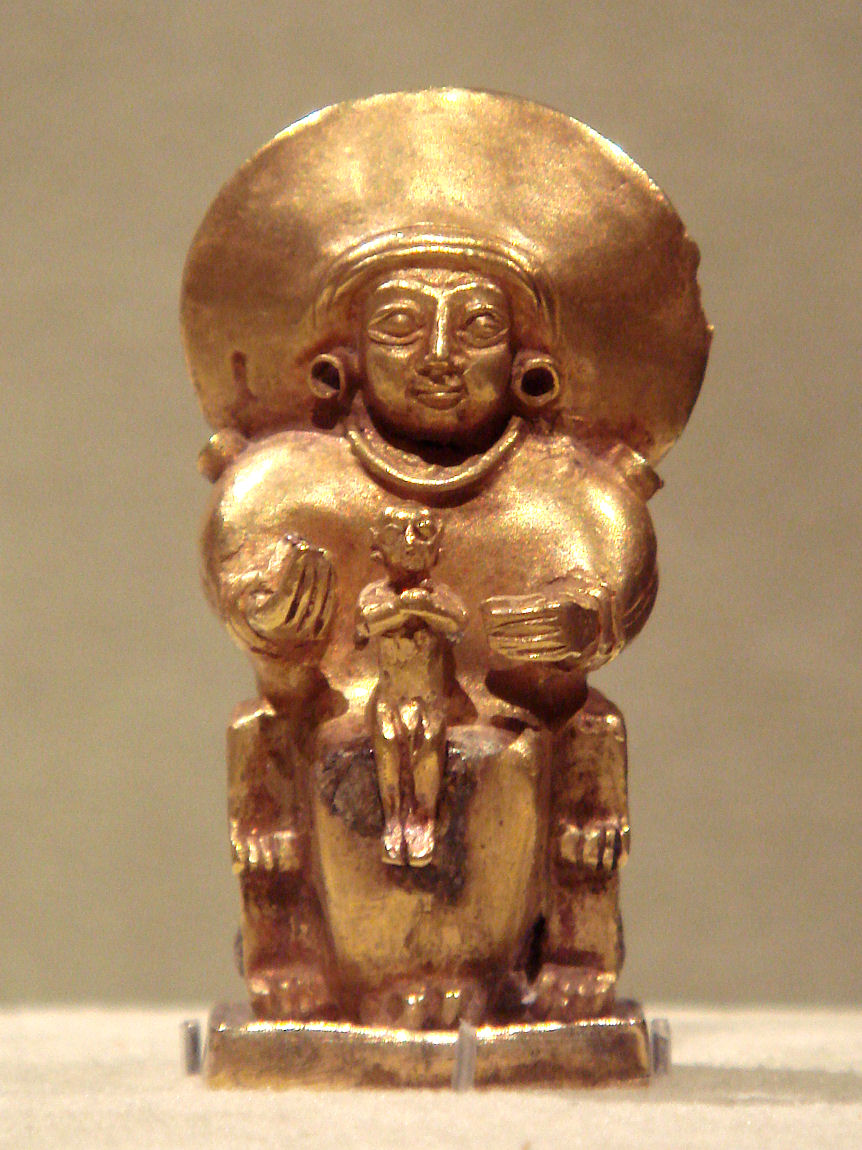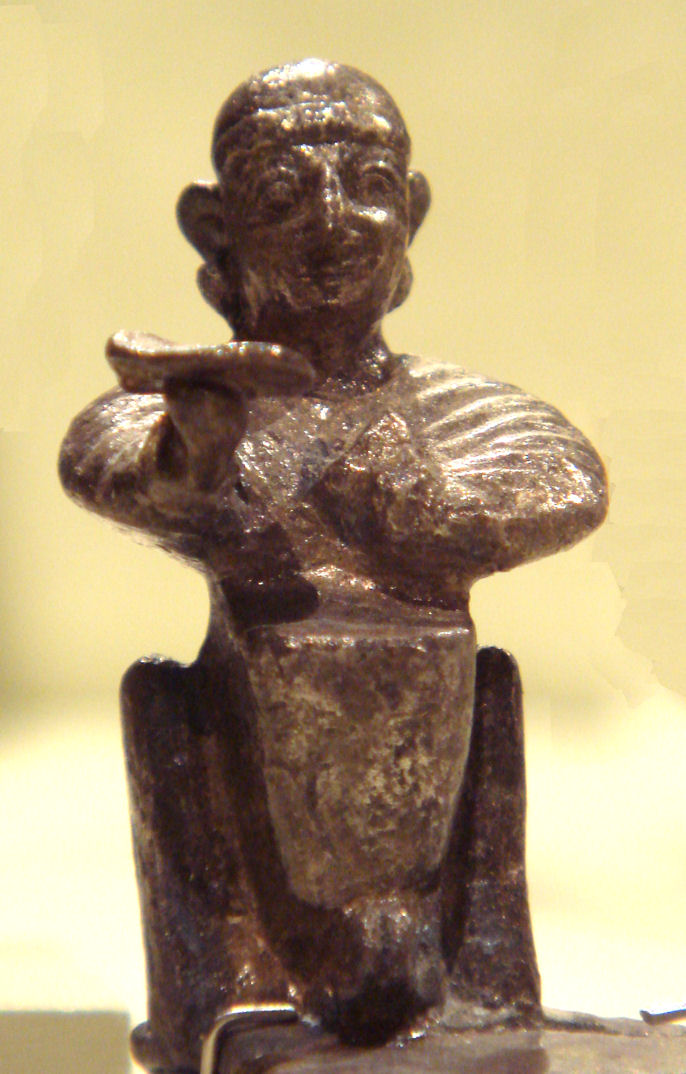|
Arinna
Arinna was the major cult center of the Hittite sun-goddess known as dUTU URU''Arinna'' or " Sun-Goddess of Arinna", who is also sometimes identified as ''Arinniti'' or as ''Wuru(n)šemu''. Arinna was located near Hattusa, the Hittite capital. The Sun-Goddess of Arinna is the most important one of three important solar deities of the Hittite pantheon, besides dUTU ''nepisas'' 'the sun of the sky' and dUTU ''taknas'' 'the sun of the earth'. She was considered to be the chief deity in some sources, in place of her husband. Her consort was the Storm-God; they and their children were all derived from the former Hattic pantheon. The goddess was also perceived to be a paramount chthonic or earth goddess. She becomes largely syncretised with the Hurrian goddess Hebat, as the Hittite Storm-God was with Teshub. In the late 14th century BC, King Mursili II was particularly devoted to the Sun-Goddess of Arinna. Karaşehir Hüyük has been suggested as the site of Arinna. See also ... [...More Info...] [...Related Items...] OR: [Wikipedia] [Google] [Baidu] |
Sun Goddess Of Arinna
The Sun goddess of Arinna, also sometimes identified as Arinniti or as Wuru(n)šemu, is the chief Goddess of Hittite mythology. Her companion is the weather god Tarḫunna. She protected the Hittite kingdom and was called the "Queen of all lands." Her cult centre was the sacred city of Arinna. In addition to the Sun goddess of Arinna, the Hittites also worshipped the Sun goddess of the Earth and the Sun god of Heaven, while the Luwians originally worshipped the old Proto-Indo-European Sun god Tiwaz. It appears that in the northern cultural sphere of the early Hittites, there was no male solar deity. Distinguishing the various solar deities in the texts is difficult since most are simply written with the Sumerogram dUTU (Solar deity). As a result, the interpretation of the solar deities remains a subject of debate. Family and myths The Sun goddess of Arinna and the weather god Tarḫunna formed a pair and together they occupied the highest position in the Hittite state's pa ... [...More Info...] [...Related Items...] OR: [Wikipedia] [Google] [Baidu] |
Hittite Deities
Hittite mythology and Hittite religion were the religious beliefs and practices of the Hittites, who created an empire centered in Anatolia from . Most of the narratives embodying Hittite mythology are lost, and the elements that would give a balanced view of Hittite religion are lacking among the tablets recovered at the Hittite capital Hattusa and other Hittite sites. Thus, "there are no canonical scriptures, no theological disquisitions or discourses, no aids to private devotion". Some religious documents formed part of the corpus with which young scribes were trained, and have survived, most of them dating from the last several decades before the final burning of the sites. The scribes in the royal administration, some of whose archives survive, were a bureaucracy, organizing and maintaining royal responsibilities in areas that would be considered part of religion today: temple organization, cultic administration, reports of diviners, make up the main body of surviving te ... [...More Info...] [...Related Items...] OR: [Wikipedia] [Google] [Baidu] |
Teshub
Teshub was the Hurrians, Hurrian weather god, as well as the head of the Hurrian pantheon. The etymology of his name is uncertain, though it is agreed it can be classified as linguistically Hurrian language, Hurrian. Both Phonetics, phonetic and Logogram, logographic writings are attested. As a deity associated with the weather, Teshub could be portrayed both as destructive and protective. Individual weather phenomena, including winds, lightning, thunder and rain, could be described as his weapons. He was also believed to enable the growth of vegetation and create rivers and springs. His high position in Hurrian religion reflected the widespread importance of weather gods in northern Mesopotamia and nearby areas, where in contrast with the south agriculture relied primarily on rainfall rather than irrigation. It was believed that his authority extended to both mortal and other gods, both on earth and in heaven. However, the sea and the underworld were not under his control. Depictio ... [...More Info...] [...Related Items...] OR: [Wikipedia] [Google] [Baidu] |
Alaca Höyük
Alacahöyük or Alaca Höyük (sometimes also spelled as ''Alacahüyük'', ''Euyuk'', or ''Evuk'') is the site of a Neolithic Age, Neolithic and Hittites, Hittite settlement and is an important archaeological site. It is situated near the village of Alacahüyük in the Alaca District of Çorum Province, Turkey, northeast of Boğazkale (formerly and more familiarly Boğazköy), where the ancient capital city Hattusa of the Hittite Empire was situated. Its Hittite name is unknown: connections with Arinna, Tawiniya, and Zippalanda have all been suggested. History The mound (Turkish language, Turkish ''Tell (archaeology), höyük'') measures 310 meters by 275 meters with a height of about 14 meters. The mound features cone like rises at the south and northeast ends. It has 14 occupational layers with 9-14 being Chalcolithic, 5-8 being Early Bronze Age (royal tombs), and 2-4 being Hittite. The uppermost layer shows elements of Phrygian, Roman, and Ottoman times. Chalcolithic Layers ... [...More Info...] [...Related Items...] OR: [Wikipedia] [Google] [Baidu] |
Tarḫunna
Tarḫunna or Tarḫuna/i was the Hittite weather god. He was also referred to as the "Weather god of Heaven" or the "Lord of the Land of Hatti". Name Tarḫunna is a cognate of the Hittite verb ''tarḫu-zi'', "to prevail, conquer, be powerful, be able, defeat"; from the Proto-Anatolian weather god ''*Tṛḫu-ent-,'' "conquering"; ultimately from PIE ''*terh₂-'', "to cross over, pass through, overcome". The same name was used in almost all Anatolian languages: Luwian '' Tarḫunz-''; Carian ''Trquδ-''; Milyan ''Trqqñt-'', and Lycian: ''Trqqas'' (A), ''Trqqiz'' (B). Norbert Oettinger has argued that the functions of the Anatolian weather god ultimately come from the Proto-Indo-European god Perkwunos, but that they did not preserve the old name to coin instead the new epithet ''Tṛḫu-ent-'' ("conquering"), which sounded close to the name of the Hattian Storm-god ''Taru''. Role As weather god, Tarḫunna was responsible for the various manifestations of ... [...More Info...] [...Related Items...] OR: [Wikipedia] [Google] [Baidu] |
Hurri
The Hurrians (; ; also called Hari, Khurrites, Hourri, Churri, Hurri) were a people who inhabited the Ancient Near East during the Bronze Age. They spoke the Hurrian language, and lived throughout northern Syria, upper Mesopotamia and southeastern Anatolia. The Hurrians were first documented in the city of Urkesh, where they built their first kingdom. Their largest and most influential Hurrian kingdom was Mitanni. The population of the Hittite Empire in Anatolia included a large population of Hurrians, and there is significant Hurrian influence in Hittite mythology. By the Early Iron Age, the Hurrians had been assimilated with other peoples. The state of Urartu later covered some of the same area. A related people to the Hurrians are the Urarteans. History Early Bronze Age The Khabur River valley became the heart of the Hurrian lands for a millennium. The first known Hurrian kingdom emerged around the city of Urkesh (modern Tell Mozan) during the third millennium BC. There ... [...More Info...] [...Related Items...] OR: [Wikipedia] [Google] [Baidu] |
Earth Goddesses
Earth is the third planet from the Sun and the only astronomical object known to harbor life. This is enabled by Earth being an ocean world, the only one in the Solar System sustaining liquid surface water. Almost all of Earth's water is contained in its global ocean, covering 70.8% of Earth's crust. The remaining 29.2% of Earth's crust is land, most of which is located in the form of continental landmasses within Earth's land hemisphere. Most of Earth's land is at least somewhat humid and covered by vegetation, while large sheets of ice at Earth's polar deserts retain more water than Earth's groundwater, lakes, rivers, and atmospheric water combined. Earth's crust consists of slowly moving tectonic plates, which interact to produce mountain ranges, volcanoes, and earthquakes. Earth has a liquid outer core that generates a magnetosphere capable of deflecting most of the destructive solar winds and cosmic radiation. Earth has a dynamic atmosphere, which sustains Earth' ... [...More Info...] [...Related Items...] OR: [Wikipedia] [Google] [Baidu] |
Hans G
Hans may refer to: __NOTOC__ People * Hans (name), a masculine given name * Hans Raj Hans, Indian singer and politician ** Navraj Hans, Indian singer, actor, entrepreneur, cricket player and performer, son of Hans Raj Hans ** Yuvraj Hans, Punjabi actor and singer, son of Hans Raj Hans * Hans clan, a tribal clan in Punjab, Pakistan Places * Hans, Marne, a commune in France * Hans Island, administrated by Greenland and Canada Arts and entertainment * ''Hans'' (film) a 2006 Italian film directed by Louis Nero * Hans (Frozen), the main antagonist of the 2013 Disney animated film ''Frozen'' * ''Hans'' (magazine), an Indian Hindi literary monthly * ''Hans'', a comic book drawn by Grzegorz Rosiński and later by Zbigniew Kasprzak Other uses * Clever Hans, the "wonder horse" * ''The Hans India'', an English language newspaper in India * HANS device, a racing car safety device * Hans, the ISO 15924 code for Simplified Chinese characters See also *Han (other) Han may refer t ... [...More Info...] [...Related Items...] OR: [Wikipedia] [Google] [Baidu] |
Mursili II
There were three Hittite kings called Mursili: * Mursili I, ca. 1556–1526 BCE ( short chronology), and was likely a grandson of his predecessor, Hattusili I. His sister was Ḫarapšili and his wife was queen Kali. * Mursili II, (also spelled Mursilis II) was a king of the Hittite Empire (New kingdom) ca. 1321–1295 BC (short chronology). * Mursili III, also known as Urhi-Teshub, was a king of the Hittites who assumed the throne of the Hittite empire (New kingdom) at Tarhuntassa upon his father's death around 1272 BCE. He was a cousin of Tudhaliya IV and Queen Maathorneferure. See also * List of Hittite kings {{SIA Hittite kings ... [...More Info...] [...Related Items...] OR: [Wikipedia] [Google] [Baidu] |






